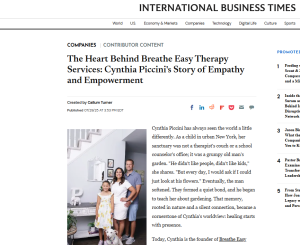In Western culture, over-the-top romantic gestures, boxes of chocolates, and romantic getaways are the hallmarks of February 14, a.k.a. Valentine’s Day.
If you’re in a relationship, you may look forward to your partner taking the initiative to show you how much they care. You might be looking for the perfect gift to impart your emotions to your “better half,” yourself. For many, this gift-giving scenario works and leads to heartfelt shows of emotion.
In fact, studies show that expectations mostly meet reality in many romantic relationships. According to Chopick et al. (2014), the upcoming love holiday can serve as “rose-tinted glasses” to view romantic relationships, especially among those who enjoy intimacy and feelings of being close to their partner.
“Perhaps Valentine’s Day serves as an annual reminder to individuals to pay particular attention to the positive aspects of their relationships,” explained Chopick et al. (2014) (p. 48).
There is another side to this chocolate-covered coin, however. Individuals who have difficulty with or avoid intimacy may have a different perception of the holiday. For them, Valentine’s Day activates insecurities instead, and those with higher levels of anxiety report hypervigilance about any perceived signs of rejection or abandonment, seeking “excessive reassurance” (Shaver et al., 2005). In this scenario, excessive worry over the holiday’s symbolism and how it relates to the quality of their relationship can be crushing. Individuals can combat these feelings by having a heartfelt conversation with a partner that may help calm the anxiety tsunami that can hit before, during, and after the holiday.
Valentine’s Day doesn’t have to be just for couples, however. Studies show that our friends and family are just, if not more important, than romantic partners.
According to a poll by the American Psychiatry Association, 62% of Americans said their friends had a mostly positive impact on their mental health. This number is higher than children (48%), their extended family (47%), their spouse or partner (46%), and their parents (42%) (APA, 2023).
Indeed, Valentine’s Day can provide the opportunity to focus on those who make a difference in your life because it offers the chance to show friends and family how much we care. Honor your friends by throwing a party or planning a fancy dinner.
If you’re flying solo on Valentine’s Day, don’t fret, you are not alone. According to a poll conducted by Cigna in 2020, 3 in 5 Americans felt lonely. They said low social interaction, poor health, and lack of balance among those Americans contributed to feeling lonely (Cigna, 2020).
There are ways to fight back against loneliness, though. Self-care can be a focus for those planning to celebrate alone. Get a facial or binge-watch that show you’ve been thinking about. Or you can stay home and enjoy a glass of wine, your favorite podcast, and a hot bath. Other ideas include visiting a local animal shelter, taking a class you’ve always wanted to take, or planning an excursion.
Regardless of your choice, remember that February 14 is just a day in all aspects – Don’t believe the Hype!
For more information on relationships and maintaining mental health, you can contact us at Breathe Easy Therapy Services here.
References
American Psychiatry Association. (2023) As Valentine’s Day Approaches, Americans Feel Good About Their Social Connections, Value Friendships for Mental Health Impact. [Press Release] https://www.psychiatry.org/news-room/news-releases/as-valentine%E2%80%99s-day-approaches-americans-feel-good
Chopik, W. J., Wardecker, B. M., & Edelstein, R. S. (2014). Be mine: Attachment avoidance predicts perceptions of relationship functioning on valentine’s Day. Personality and Individual Differences, 63, 47-52. 10.1016/j.paid.2014.01.035
Cigna (2020) Key Determinants of Loneliness and the Workplace. [PDF] https://newsroom.cigna.com/loneliness-in-america
Shaver, P. R., Schachner, D. A., & Mikulincer, M. (2005). Attachment Style, Excessive Reassurance Seeking, Relationship Processes, and Depression. Personality and Social Psychology Bulletin, 31(3), 343–359. https://doi.org/10.1177/0146167204271709





